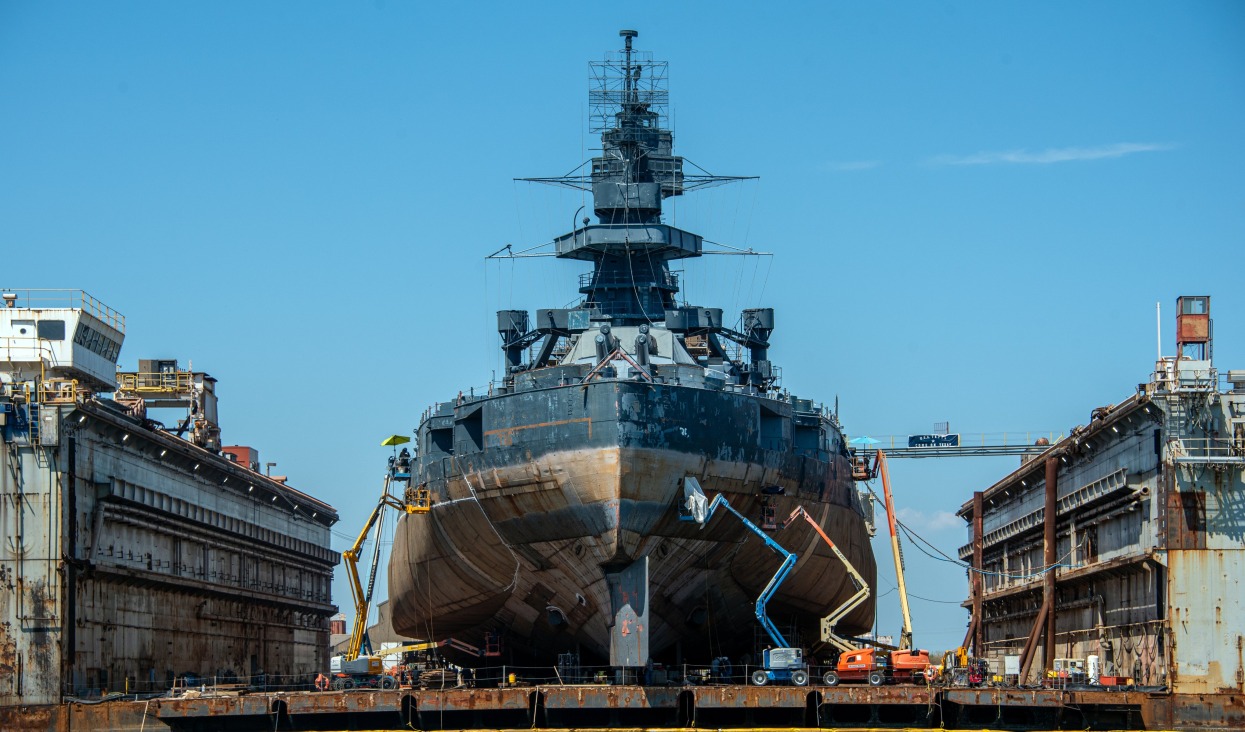The United States and Japan are exploring an agreement involving Japanese shipyards conducting regular overhauls and maintenance on US Navy warships.
This initiative aims to ensure the continuous readiness of American naval vessels in the Indo-Pacific region, bolstering their preparedness for any potential conflicts in the region.
In alignment with these endeavors, the United States and Japan have recently unveiled a crucial initiative known as the Ship Repair Council Japan.
The establishment of this working group, announced by US Ambassador to Japan Rahm Emanuel on January 19, signals a strategic partnership aimed at enhancing the operational readiness of US naval vessels and countering China’s military expansion.
The Ship Repair Council Japan brings together key stakeholders, including representatives from the US Navy, the Japan Maritime Self-Defense Force, and private companies from both nations.
The primary objective is to facilitate maintenance and repairs for US naval vessels at private Japanese shipyards, a move designed to optimize resources and reduce downtime.
Ambassador Emanuel, speaking about the initiative, highlighted the importance of keeping US Navy ships in the region. The collaboration aims to strengthen the US-Japan Alliance and joint deterrence efforts by enabling crucial repairs in Japan.
Currently, US warships stationed in Japan undergo basic maintenance at US bases, but extensive repairs and overhauls necessitate a return to the United States. The Ship Repair Council Japan is expected to significantly cut down on costs and downtime associated with the repair process.
Emanuel expressed optimism about the swift implementation of the initiative and revealed plans for the first event to take place next month.
He underscored the importance of establishing a more permanent arrangement, moving beyond occasional repairs to make it an integral part of the ongoing process.
This collaboration builds on previous repair activities conducted by the US Navy in Japan and the Philippines, signaling a commitment to making ship repairs a consistent and vital component of regional naval operations.
Furthermore, the Ship Repair Council Japan represents a proactive step in ensuring the preparedness of US naval forces and contributing to the stability and security of the Indo-Pacific region.
China’s Naval Might Grows
Rear Admiral Tom Emanuel, addressing reporters at the Yokosuka naval base near Tokyo, highlighted China’s extensive monitoring of maritime activities and the subsequent evaluation of a nation’s deterrence capabilities based on ship movements.
The US Navy, long unchallenged in Asian waters, now faces a formidable Chinese navy surpassing American warship production.
The Pentagon’s annual report, released in October, disclosed that China has grown its fleet to over 370 ships and submarines, up from 340 in 2023, solidifying its status as the world’s largest navy by numerical strength.
To address the strain on US shipyards grappling with maintenance backlogs of up to 4,000 days, Emanuel proposed the use of Japanese dry docks.
This move would allow American shipyards to focus on expanding the US fleet, emphasizing the need for strategic partnerships to counter the evolving maritime landscape.
Japan, a key US ally, hosts the largest overseas concentration of American military power. The Yokosuka naval base accommodates the only forward-deployed carrier strike group, operating as part of the Seventh Fleet, which commands up to 70 ships and submarines.

Mitsubishi Heavy Industries, a major player in Japan’s defense sector, operates commercial dockyards in Yokohama and has previously conducted maintenance work on US Navy ships.
In addition to Japan, the US has explored collaboration with India, aiming to utilize Indian shipyards to repair and maintain US Maritime Sealift Command ships.
This initiative, born out of a summit in April 2022, seeks to enhance defense cooperation with India, strategically positioned at the opposite end of the Indo-Pacific.
The US envisions New Delhi becoming a crucial military ally and an alternative to China for manufacturing and technology development.
However, the prospect of outsourcing repair work overseas and potentially engaging foreign shipbuilders raises concerns among US businesses and lawmakers representing domestic shipyards and their employees.
- Contact the author at ashishmichel(at)gmail.com
- Follow EurAsian Times on Google News




